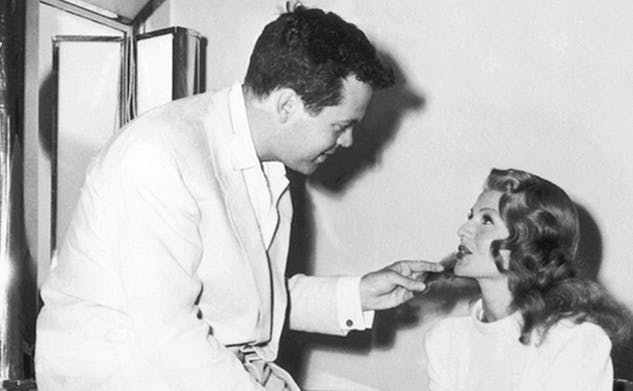There’s Hollywood — And Then There’s ‘Hollywood’
Here’s the odd thing: A novel about Hayworth, Welles, and the ambiance of 1940s Hollywood has an authenticity that even a fine biography of Keaton cannot quite equal.

‘Big Red: A Novel Starring Rita Hayworth and Orson Welles’
By Jerome Charyn
Liveright, 304 pages
‘Keaton: A Filmmaker’s Life’
By James Curtis
Knopf, 832 pages
‘Mercury Pictures Presents’
By Anthony Marra
Hogarth, 432 pages
So you want to write a novel about Rita Hayworth and Orson Welles. Who will be the narrator? If it is Welles, the narrative will be overwhelmed with his grandiosity. If it is Hayworth, you won’t get far because she was not very articulate and did not seem to be all that in touch with her inner life.
One of the supreme strengths of “Big Red” is that Jerome Charyn finds exactly the right voice for the novel in Rusty Redburn, a cinephile and double agent hired by Harry Cohn to spy on the couple even as she falls in love with them. She feeds the Columbia Pictures mogul only tidbits that won’t hurt her friends.
At the end of the novel, Mr. Charyn explains how he arrived at the narrator and the pitch of the story. Only a supremely confident writer shows us how the wheels turn, and in this case those wheels turn with extraordinary ease and elegance. Rusty’s devotion to the couple reveals her deep love for them, which means, in this case, also disclosing their human failings.
Welles was always off to some new ambitious project while Hayworth, still thinking of herself as Margarita Cansino, was a stay-at-home wife, worried about her poor education and embarking on a reading list under Rusty’s tutelage.
Along the way, we get Rusty’s riveting comments on “Citizen Kane,” “Gilda” (the film that made Hayworth a star), and “The Lady from Shanghai,” which became a duel between a studio that wanted to shave down the film to a minor, if efficient melodrama, and Welles’s direction that made it impossible to eliminate his signature mirror scene — a wonderful movieland shootout.
As far as Hollywood is concerned, Welles does the unspeakable in “The Lady from Shanghai”: He has Hayworth’s gorgeous red mane dyed blonde, and then makes her a femme fatale. Hayworth adapted — she did so much better than she herself ever believed — which is part of the wistful, agonizing story this novel has to tell.
I kept thinking: Could a biographer do better than Jerome Charyn? No. A biographer cannot say: “Who is going to tell the story?” The biographer is stuck with himself — unless, like Edmund Morris, he re-creates himself as a character in a biography of Ronald Reagan. That does not work, though. No one believes in Morris as a character, no matter how he tries to reinvent himself.
So, because you don’t really want to read about the biographer as narrator, what can a biographer do? Resort to James Curtis’s move in his sumptuous biography of Buster Keaton: Begin with a scene about how Keaton quarreled with director Gerald Potterton about how to create the greatest comic impact in a scene involving a railroad train and a bridge.
The way Mr. Curtis presents the scene, it could almost be part of a screenplay, and you have to wonder about the provenance of the dialogue. Flip to the notes and you will see that it is apparently reconstructed from a phone interview with Potterton. In short, the whole creation is an act of memory. Perhaps Potterton took notes, but Mr. Curtis’s note does not say so.
So here’s the odd thing: A novel about Hayworth, Welles, and the ambiance of 1940s Hollywood has an authenticity that even a fine biography of Keaton cannot quite equal.
So how about a novel about 1940s Hollywood, with invented characters not bound by the factual restraints of a biographical novel? “Mercury Pictures Presents,” about a fictional Hollywood studio, is good but not quite as good as “Big Red.” Somehow an invented studio seems superfluous after reading about the real thing.
Mr. Charyn does not merely present what a reader might already know about Welles and Hayworth; instead, what we know, and don’t know, is angled through Rusty’s exquisite sensibility.
Rusty is a bit of an outsider herself, a lesbian, distrusted by both Cohn and Hollywood columnist Louella Parsons. We care about Rusty because she is dealing with the same regime that Hayworth and Welles have to combat. Rusty’s voice is from within. This is a fiction we believe in absolutely.
Mr. Rollyson is the editor of the Hollywood Legends series, University Press of Mississippi.

